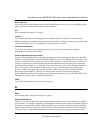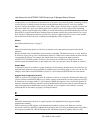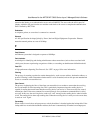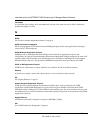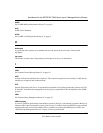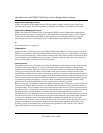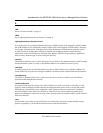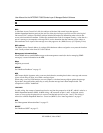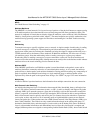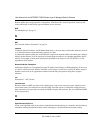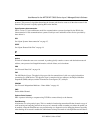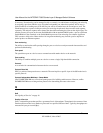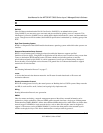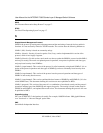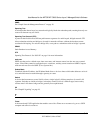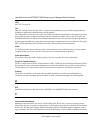
User Manual for the NETGEAR 7300S Series Layer 3 Managed Switch Software
Glossary C-13
202-10088-01, March 2005
MPLS
See “Multi-Protocol Label Switching” on page 13.
Multicast Backbone
The MBONE is a virtual network. It is layered on top of portions of the physical Internet to support routing
of IP multicast packets since that function has not yet been integrated into many production routers. The
network is composed of islands that can directly support IP multicast, such as multicast LANs like Ethernet,
linked by virtual point-to-point links called "tunnels". The tunnel endpoints are typically workstation-class
machines having operating system support for IP multicast and running the "mrouted" multicast routing
daemon.
Multicasting
To transmit a message to specific recipients across a network. A simple example of multicasting is sending
an e-mail message to a mailing list. Teleconferencing and videoconferencing also use multicasting, but
require more robust protocols and networks. Standards are being developed to support multicasting over a
TCP/IP network such as the Internet. These standards, IP Multicast and Mbone, will allow users to easily
join multicast groups. Note that multicasting refers to sending a message to a select group whereas
broadcasting refers to sending a message to everyone connected to a network. The terms multicast and
narrowcast are often used interchangeably, although narrowcast usually refers to the business model whereas
multicast refers to the actual technology used to transmit the data.
Multicast OSPF
With a MOSPF specification, an IP Multicast packet is routed based both on the packet's source and its
multicast destination (commonly referred to as source/destination routing). As it is routed, the multicast
packet follows a shortest path to each multicast destination. During packet forwarding, any commonality of
paths is exploited; when multiple hosts belong to a single multicast group, a multicast packet will be
replicated only when the paths to the separate hosts diverge. See “OSPF” on page 15 for more information.
Multiplexing
A function within a layer that interleaves the information from multiple connections into one connection.
Multi-Protocol Label Switching
An initiative that integrates Layer 2 information about network links (bandwidth, latency, utilization) into
Layer 3 (IP) within a particular autonomous system—or ISP—in order to simplify and improve IP-packet
exchange. MPLS gives network operators a great deal of flexibility to divert and route traffic around link
failures, congestion, and bottlenecks. From a QoS standpoint, ISPs will better be able to manage different
kinds of data streams based on priority and service plan. For instance, those who subscribe to a premium
service plan, or those who receive a lot of streaming media or high-bandwidth content can see minimal
latency and packet loss. When packets enter into a MPLS-based network, Label Edge Routers (LERs) give
them a label (identifier). These labels not only contain information based on the routing table entry (i.e.,
destination, bandwidth, delay, and other metrics), but also refer to the IP header field (source IP address),
Layer 4 socket number information, and differentiated service. Once this classification is complete and
mapped, different packets are assigned to corresponding Labeled Switch Paths (LSPs), where Label Switch



